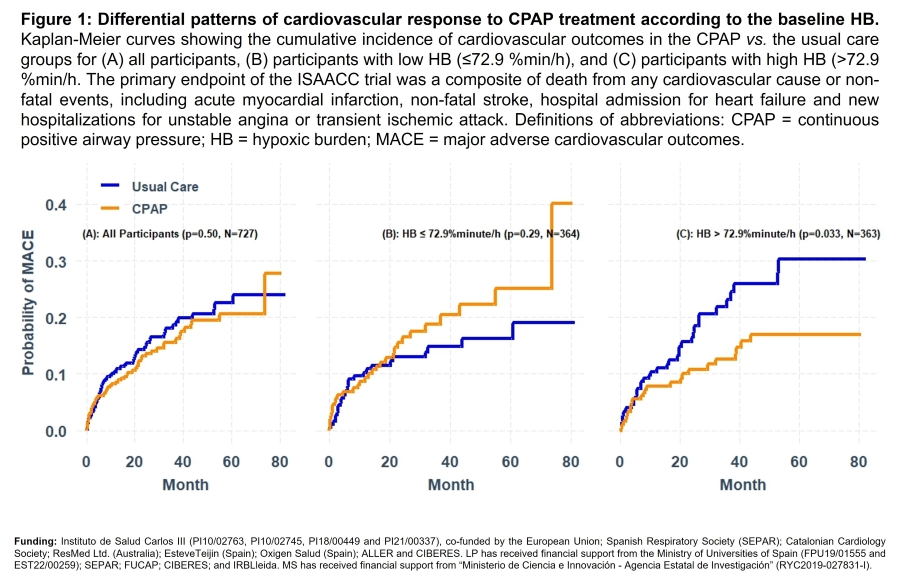Abstract
Background
Hypoxic burden (HB) has emerged as a strong indicator of cardiovascular risk in OSA. Whether this metric could be useful to guide therapeutic decision making is unknown.
Aim
To assess the potential of baseline HB to predict cardiovascular benefit of CPAP therapy in non-sleepy OSA patients.
Methods
Post-hoc analysis of the ISAACC trial (NCT01335087) including non-sleepy subjects with acute coronary syndrome who underwent respiratory polygraphy (RP). OSA patients (AHI ?15) were randomized to receive CPAP or usual care and were followed for a median of 3.35 years. HB was calculated for all OSA patients with available RP data, as total area under all automatically-identified desaturations divided by total sleep time [Esmaeili et al. ATS 2023 conference abstract]. Patients were categorized according to treatment allocation and the median value of HB (72.9 %min/h).
Results
A significant interaction was found between CPAP treatment and the HB groups [interaction HR (95% CI) = 0.46 (0.22-0.97)], after adjustment for confounders. CPAP therapy was associated with a significant long-term protection against cardiovascular events only in patients with high HB (Figure 1), with an adjusted risk reduction of 39% compared to usual care.
Conclusion
High HB was associated with a protective effect of CPAP on cardiovascular prognosis. This metric could be useful to identify non-sleepy OSA patients most likely to benefit from CPAP treatment.
